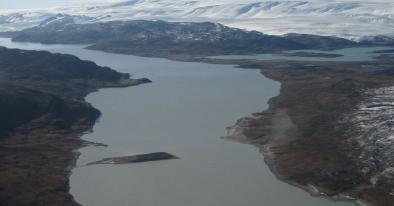Science Source
A tipping point in refreezing accelerates mass loss of Greenland’s glaciers and ice caps
- States that melting of the Greenland ice sheet (GrIS) and its peripheral glaciers and ice caps (GICs) contributes about 43% to contemporary sea level rise
- States that, while patterns of GrIS mass loss are well studied, the spatial and temporal evolution of GICs mass loss and the acting processes have remained unclear
- Examines data set including individual surface mass balance components (precipitation, sublimation, melt, refreezing and runoff) for all GICs on a daily time scale (1958–2015)
- Identifies 1997 (±5 years) as a tipping point for the rates of gain and loss of ice from GICs
- Finds that that year marks the onset of a rapid deterioration in the capacity of the GICs firn (granular snow that has not yet been compressed into ice) to refreeze meltwater, causing long-term mass loss
- Finds that consequently, GICs runoff increases 65% faster than meltwater production, tripling the post-1997 mass loss
- Concludes that, in contrast, the extensive inland firn of the GrIS retains most of its refreezing capacity for now
- Results underline the very different responses of the GICs and GrIS to atmospheric warming
Related Content
Science Source
| Geophysical Research Letters
Melting glaciers stimulate large summer phytoplankton blooms in southwest Greenland waters
Kevin R. Arrigo, Gert L. van Dijken, Renato M. Castelao et al
Science Source
| Geophysical Research Letters
Ice Core Records of West Greenland Melt and Climate Forcing
K. A. Graeter, E. C. Osterberg, D. G. Ferris et al
Science Source
| Science Advances
Abrupt shift in the observed runoff from the southwestern Greenland ice sheet
Andreas P. Ahlstrøm, Dorthe Petersen, Peter L. Langen et al
Headline

Dec 15, 2017 | Vox
Greenland's ice sheet is driving global sea level rise. One section is melting 80% faster.


